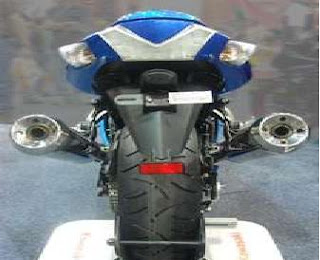The first bike we ever tested, about 100 years ago, was the Suzuki V-Strom. It’s a great bike, with a wonderful engine, surprisingly good handling and looks only its mother could love. And now here we are testing the runt of the litter, the V-Strom 650. And what’s changed? At first glance very little. It’s still enormous, still as practical as ever and still as ugly as a drunken brawl. In fact, the only obvious difference between siblings is the single exhaust on the smaller bike and a slightly less leery colour scheme.
Taking the Suzuki V-Strom 650 home, then, was likely to be something of an anticlimax. Especially as over the last few weeks I had mainly been riding the GSX-R 1000 tested elsewhere. One extreme to the other, you might say. And you’d be dead right, of course. And completely wrong. Because, despite its bulk and relatively small engine, the 650 V-Strom is not a slow bike. Not by any means.
That little motor, more commonly seen in everyone’s favourite first big bike the SV650, may only produce 66ps but it does it in style. I am pushed to remember the last time I rode a vee twin that revved this happily and I certainly can’t think of one this small that went this well.
Let’s look at the downsides, because there must be some. And there are. The SV650 is not, by any stretch of the imagination, a pretty bike. Understatement. It’s as ugly as sin. Happily, though, it is also nearly as much fun. The only other criticism I have is also aesthetic and purely down to my own taste and memory. If the term ‘plastic maggot’ means nothing to you then please feel free to skip this bit.
Back in the late 70’s and early 80’s there was a universally derided, mocked and generally disliked bike called the CX500. It was also incredibly common because at the time it was the only shaft drive liquid cooled bike available that was a sensible size and had decent performance so couriers across the land bought them and ran them ‘til they broke. The styling and handling earned them the nickname of the plastic maggot, and one of the most enduring memories I have of them was the noise they made. Horrible it was, and the 650 V-Strom sounds exactly like a plastic maggot. That pipe has to go…
Riding the beast, of course, is a different story. The noise gets left behind and all you have is the experience. The handling is inevitably a little woolly. After all, there’s a lot of fork between you and the wheel and dual purpose tyres don’t help. But you can still get your knee down if that sort of behaviour appeals, and the bike tracks easily and accurately. The wide bars help to lever it into corners fast and the geometry works well to allow you to flick the hefty bike around quite easily. The brakes are ample for a bike of this style, hampered as they are by the yards of suspension movement. No fuss or dramas though, even on gritty roads.



















































